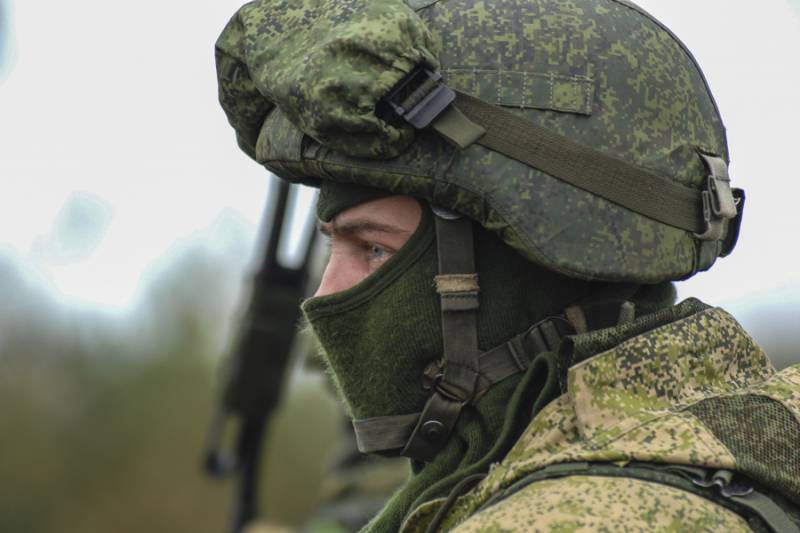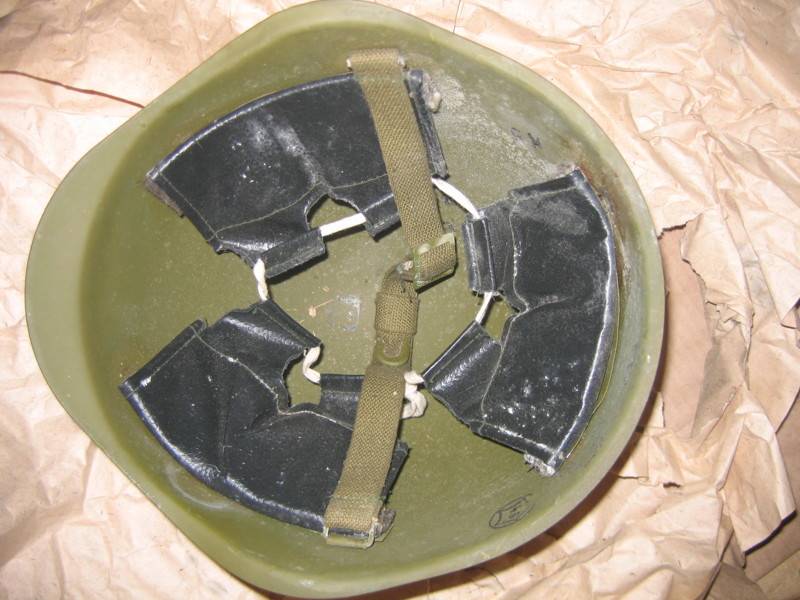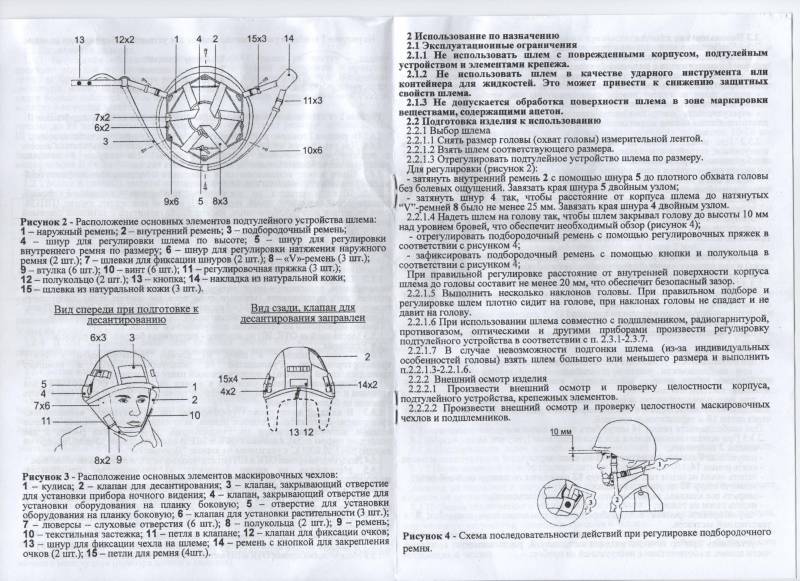Despite the very modern look of the 6b47 helmet, with its night vision mount and accessory straps,
there is a certain "zest" to this product. It is known as a sub-thumb device, or in layman's terms, a "suspension".

The under-the-shoulder device, which appeared on the SSH-40 in 1940, was held in place by six rivets and consisted
of three parts - "petals" made of synthetic leather, leatherette or fabric, which were attached to the upper part of the helmet
with a string to adjust (mount) the SSH for ease of wear. Each petal has a shock-absorbing cotton pad on the inside.

In modern helmets this system is clearly more advanced and is described below:

According to the instructions, the height of the helmet must be adjusted to the size of the head, as well as the elasticity of the outer straps. Everything is regulated as follows:

I really like paragraph 2.2.1.6, especially regarding the adjustment of the suspension when wearing a gas mask.
RKhBZ criterion #1, i.e. wearing a gas mask, equates to an excellent rating of 7 seconds. It has been proven that
if you wear a gas mask without changing the suspension, the helmet will not function properly. More accurately,
there will be helmets who don't care if his head is wearing a gas mask or a headset. But the under-the-shoulder
system, which is supposed to mitigate the impact of hitting the helmet, has failed to meet the requirements of the regulations.
Strangely, in the 2017 instructions there is no data at all about what energy the body transfers to the head of the wearer or
what the suspension absorbs, but points to the steel ball of the GOST, which the helmet will protect from 100%.
The transfer of energy to the body is a serious problem, for example in motor sports, where they often fall and fight, which is
not considered an accident. The mandatory certification of motorcycle helmets in Europe has existed since 1982, according to
which the helmet must not only withstand the impact, but also absorb most of the energy generated by the impact. What's wrong
with motorcycles? Yes, although in foreign helmets there are pillows for absorbing energy.
It's been said that our suspension requirements are such that when it hits the helmet, its body shouldn't touch the wearer's head,
but according to Br6, 47b1 is protection, and how the suspension is supposed to absorb the energy of the bouncing rifle cartridge
isn't clear to me. But clearly the probability of catching such a bounce cannot be ignored.
.png) I won't go into detail as there is no mandate to accurately compare helmet protection. The MICH was developed in the US in 1997 and has been in operation since 2001. It is slightly heavier and more heavily armored than the 6b47, but the main difference is the suspension system. The MICH helmet is equipped with a four-point retention system on the head and seven pads - similar to the CAP in a bulletproof undershirt.
I won't go into detail as there is no mandate to accurately compare helmet protection. The MICH was developed in the US in 1997 and has been in operation since 2001. It is slightly heavier and more heavily armored than the 6b47, but the main difference is the suspension system. The MICH helmet is equipped with a four-point retention system on the head and seven pads - similar to the CAP in a bulletproof undershirt.
The suspension is adjusted by tightening or loosening the straps with little or no need to remove the helmet from the head. With the help of fastex fasteners, it can be quickly disassembled. The main drawbacks of this system are the cheap material, which makes rubber bands unusable, and the frequent twisting of the lines due to the lack of rigidity.
The cushion comes with Velcro and is available in two sizes, plus a choice of helmet sizes so you can get a good fit for your head. Additionally, users can adjust the position of the pillows inside the helmet, except for the center pillow. The center pillow is prohibited from being removed, but this item is often overlooked for the convenience of wearing a helmet with headphone loops. One of the main drawbacks of pillows is that they freeze and become very hard in the cold..png)
But that was then, now you can choose a set of suspension and pillows with any padding you like.
In addition to the improved fixation, ventilation and easy adjustment lines of the helmet on the head, the center pillow is divided into two parts to facilitate the use of headphones, and the forehead pillow assumes part of the protective function. In addition, with such a front pillow, it is easier to carry night vision devices.
Of course, this is not the only suspension option. In addition to Ops-Core, Skydex, MSA, Oregon Aero, Team Wendy and others have released their options.
Despite the enthusiastic reviews of the 6b47 from the Geneva Ballistics Laboratory at DuPont's European Technical Center for helmet testing, the Internet is full of instructions for replacing the stock harness with a similar MICH, and some tinkerers have even sawed off the ear protectors to be able to use their active headphones.
There's no point in giving any characterization to those who do this, because one fact is important in this whole picture: they modify their helmets to fit their tasks. Why do you have to do this? Because there is no proper analogy.
Yes, as envisioned by the developers, the 6b47 helmet is a combination helmet and does not imply any special operations in it, which is already absurd in the current reality. However, even though the fighters are delineated according to VUS, they are all uniformly equipped according to the concept of the Ratnik series. Such little attention to the convenience of the average soldier, and sometimes total disregard for it, leads him either to ignore the manufacturer's recommendations or to buy his own. It then had to be removed, as it shouldn't have been, but that's a whole different story already...